SPEAKERS
Educational Tutorial Day 3: "Spiking Control Systems"
June 23h, 2022
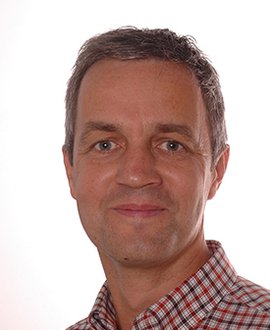
Rodolphe Sepulchre
Professor of Engineering,
University of Cambridge
Rodolphe Sepulchre holds the control chair in the department of Engineering at Cambridge, UK. He is a fellow of IFAC (2020), IEEE (2009), and SIAM (2015). He received the IEEE CSS Antonio Ruberti Young Researcher Prize in 2008 and the IEEE CSS George S. Axelby Outstanding Paper Award in 2020. He was elected at the Royal Academy of Belgium in 2013. He is (co-) author of the monographs Constructive Nonlinear Control (1997, with M. Jankovic and P. Kokotovic) and Optimization on Matrix Manifolds (2008, with P.-A. Absil and R. Mahony). His current research focuses on the control principles of neuronal circuits. It has been supported by two ERC advanced grants (Switchlets (2015) and SpikyControl (2021)).
Educational Tutorial Day 2: "Evolutionary Optimization for Neuromorphic Systems"
March 24h, 2022
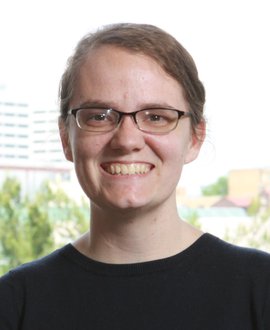
Catherine Schuman
Assistant Professor,
University of Tennessee
Catherine (Katie) Schuman is an Assistant Professor in the Department of Electrical Engineering and Computer Science at the University of Tennessee (UT). She received her Ph.D. in Computer Science from UT in 2015, where she completed her dissertation on the use of evolutionary algorithms to train spiking neural networks for neuromorphic systems. Katie previously served as a research scientist at Oak Ridge National Laboratory, where her research focused on algorithms and applications of neuromorphic systems. Katie co-leads the TENNLab Neuromorphic Computing Research Group at UT. She has over 70 publications as well as seven patents in the field of neuromorphic computing. She received the Department of Energy Early Career Award in 2019.
Educational Tutorial Day 1: "Towards extreme energy efficiency in large-scale neuromorphic systems for "greener" cognitive computing"
February 17h, 2022
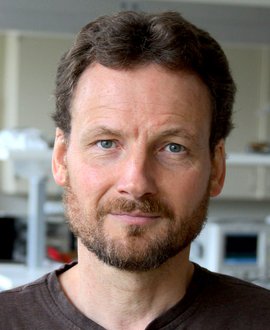
Gert Cauwenberghs
UC San Diego
https://isn.ucsd.edu
Gert Cauwenberghs is Professor of Bioengineering and Co-Director of the Institute for Neural Computation at UC San Diego, La Jolla CA. His research focuses on micropower integrated biomedical circuits, neuron-silicon and brain-machine interfaces, neuromorphic engineering, and adaptive intelligent systems. He is a Fellow of the Institute of Electrical and Electronic Engineers (IEEE) and the American Institute for Medical and Biological Engineering (AIMBE). He served IEEE in a variety of roles including as Distinguished Lecturer of the IEEE Circuits and Systems Society, as General Chair of the IEEE Biomedical Circuits and Systems Conference (BioCAS 2011, San Diego), as Program Chair of the IEEE Engineering in Medicine and Biology Conference (EMBC 2012, San Diego), as Editor-in-Chief of the IEEE Transactions on Biomedical Circuits and Systems, and on the Editorial Board of the Proceedings of the IEEE.
Educational Webinar Day 11: "How can we use optics for neuromorphic computing?"
December 14th, 2021
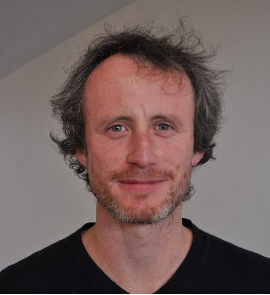
Daniel Brunner
FEMTO-ST (France)
Daniel Brunner is a CNRS researcher with the FEMTO-ST, France. His interests include novel computing using quantum or nonlinear substrates with a focuses on photonic neural networks. He was received several University and the IOP’s 2010 Roys prize and the IOP Journal Of Physics:Photonics emerging leader in photonics 2021 prize. He edited one Book and two special issues, has presented his results 45+ times upon invitation and has published 50+ scientific articles.
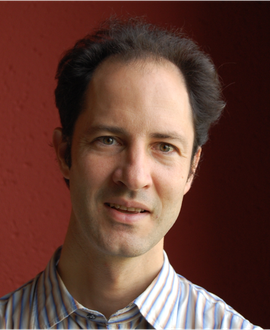
Serge Massar
Université Libre de Bruxelles (Belgium)
Serge Massar born in Zambia in 1970 and passed most of his youth in Africa. He graduated in physics from the Université Libre de Bruxelles in 1991 with highest honours. He then began research in theoretical physics under the direction of Prof. Robert Brout. He defended his PhD in 1995 with highest honours. From 1995 to 1997 he was a post-doctoral researcher at Tel Aviv University (Israel), and then from 1997 to 1998 at Utrecht University (Netherlands). In 1998 he reintegrated ULB as a Research Associate of the Fund for Scientific Research-FNRS and and then from 2012 as Professor at ULB. Since 2004 he is Director of the Laboratoire d’Information Quantique of the Physics Department at ULB.
During his PhD, Serge Massar studied quantum gravity and in particular black hole evaporation (Hawking radiation). The aim of these works was to understand the gravitational backreaction to the evaporation process. The most important results obtained concerned the role of the transplanckian frequencies needed to explain the origin of the radiation.
Later he started working in the nascent field of quantum information, and this gradually became his main topic of research. Important contributions concern quantum measurement theory, quantum cloning, entanglement, quantum non locality, quantum cryptography. He pioneered the use of non locality to realize “device independent” quantum cryptographic tasks, such as key distribution or random number generation, whose security does not rely on modelling of the internal workings of the devices used. His work in quantum information lead to an important offshoot in theoretical computer science when he solved a 20-year old conjecture on the Travelling Salesman Problem.
In parallel with the above Serge Massar developed an activity in experimental quantum optics and non-linear optics. Recently he has been devoting increasing time to artificial intelligence, machine learning and its relation to complex systems. In this context, he works on the experimental implementation of the concept of “reservoir computing”. Important results are the first realisation of a new architecture based on a single nonlinear node and a delay loop, of opto-electronic and all-optical reservoirs, of a fully analog system.
Amongst other recognitions, he was awarded the Alcatel-Bell prize of the FNRS, the 2010 La Recherche prize for his work on certified quantum random number generation, the best paper award at the highly competitive Symposium on Theory of Computing (STOC) in 2012 for his work on the Travelling Salesman Problem, and was elected in 2021 member of Royal Belgian Academy of Science.
He has co-authored over 130 publications in peer reviewed scientific journals and over 70 conference proceedings.
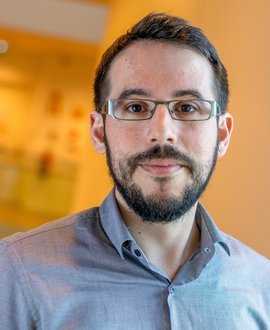
Bruno Romeira
International Iberian Nanotechnology Laboratory (Portugal)
Bruno Romeira is a staff researcher at the International Iberian Nanotechnology Laboratory, Braga, Portugal, and the coordinator of the H2020-FET-OPEN project “ChipAI”. His research cuts across several disciplines in applied physics and engineering, which include semiconductor physics, low-dimensional nanostructures, nanophotonics and neuromorphic devices.
Educational Webinar Day 10: "What can neuromorphic computing bring to low-power biomedical devices?"
November 14th, 2021
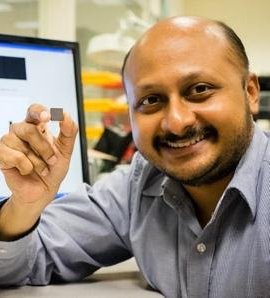
Prof. Arindam Basu
City University of Hong Kong
Arindam Basu received the B.Tech and M.Tech degrees in Electronics and Electrical Communication Engineering from the Indian Institute of Technology, Kharagpur in 2005, the M.S. degree in Mathematics and PhD. degree in Electrical Engineering from the Georgia Institute of Technology, Atlanta in 2009 and 2010 respectively. Dr. Basu received the Prime Minister of India Gold Medal in 2005 from I.I.T Kharagpur. He is currently a Professor in City University of Hong Kong in the Department of Electrical Engineering and was a tenured Associate Professor at Nanyang Technological University before this.
He is currently an Associate Editor of IEEE Sensors journal, Frontiers in Neuroscience and IEEE Transactions on Biomedical Circuits and Systems. He has served as IEEE CAS Distinguished Lecturer for 2016-17 period.
Dr. Basu was awarded MIT Technology Review's TR35 Asia Pacific award in 2012, Georgia Tech Alumni Association’s 40 under 40 class of 2021 and several best paper awards at IEEE conferences like ISCAS, BioCAS etc. His research interests include bio-inspired neuromorphic circuits, non-linear dynamics in neural systems, low power analog IC design and programmable circuits and devices.
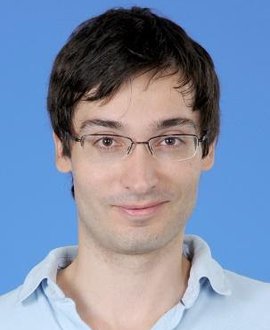
Prof. Timothée Levi
University of Bordeaux
Timothée Levi received his Ph.D degree in Electronics at University of Bordeaux in 2007. He was post-doc fellow at CEA-LETI in France and JSPS Post-doc fellow at the University of Tokyo, Japan. From October 2009 to today, he is an Associate Professor at IMS lab., Univ. Of Bordeaux, France. During the period of September 2013 to August 2015, he was a Visiting Research Fellow at the University of Tokyo, Japan. He received the Habilitation à Diriger des Recherches (HDR) in March 2017. From September 2017 to August 2020, he was Project Associate Professor at The University of Tokyo. He is guest editor at Frontiers on Neuroscience, and reviewer of several journals and conferences. He has also authored and co-authored more than 100 peer-review publications (35 journal papers). His research interest deals with biomimetic neuromorphic engineering which aims at designing and using integrated circuits which components and architecture are neuro-mimetic for bio-hybrid experiments.
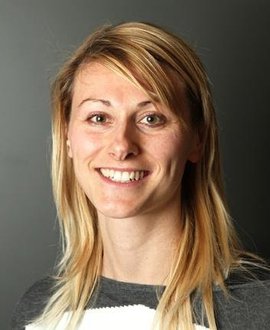
Dr. Elisa Donati
Institute of Neuroinformatics (UZH/ETHZ)
Elisa Donati (Member, IEEE) received the B.Sc., M.Sc. degrees in biomedical engineering from the University of Pisa, Pisa, Italy (cum laude), and the Ph.D. degree in biorobotics from the Sant’Anna School of Advanced Studies, Pisa, Italy, in 2016. She is currently a Senior Scientist with the Institute of Neuroinformatics, University of Zurich and ETHZ where she is training as a Neuromorphic Engineer. She is also Junior Group Leader at the Neuroscience Center Zurich in the Computational and Modeling and Motor System Group. Her research interests include how to interface neurorobotics and neuromorphic engineering for building smart and wearable biomedical devices. In particular, she is interested in designing VLSI systems for prosthetic devices, such as adaptive neuromorphic pacemakers. Another recent application includes a neuromorphic processor for controlling upper limb neuroprosthesis. She is investigating how to process EMG data to extract features to produce motor commands by using spiking neural networks. She is a TC member of Neural Systems and Applications of the circuit and system society and of the Biomedical circuit and system society.
Educational Webinar Day 9: "Why integrating neuromorphic technologies in robots?"
September 14th, 2021
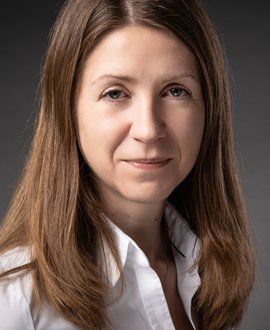
Dr. Yulia Sandamirskaya
Intel Deutschland GmbH
Yulia Sandamirskaya leads the Applications Research team of the Neuromorphic Computing Lab at Intel. Her team develops spiking neuronal network based algorithms for neuromorphic hardware to demonstrate the potential of neuromorphic computing in real-world applications. Before joining Intel, Yulia led a group “Neuromorphic Cognitive Robots” in the Institute of Neuroinformatics at the University of Zurich and ETH Zurich. She was chairing EUCog—the European Society for Artificial Cognitive Systems and coordinated an EU project NEUROTECH, creating and supporting the neuromorphic computing technology community in Europe.

Dr. Terry Stewart
University of Waterloo
Terrence C. Stewart is a Research Officer at the National Research
Council Canada, as part of the University of Waterloo Collaboration
Centre. His research is on developing computational models of
biological cognition, identifying the underlying algorithms, and
evaluating whether those algorithms may have commercial application
given modern energy-efficient neuromorphic hardware. He is also one
of the developers of Nengo, a high-level design tool for developing
large-scale computational neuroscience models, and running them
efficiently on various hardware systems.
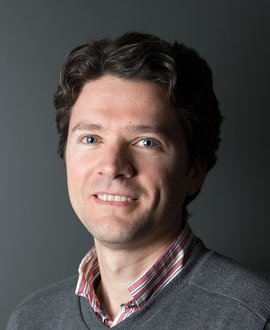
Prof. Alejandro Linares Barranco
University of Seville
Alejandro received the B.S. degree in Computer Engineering, the M.S. degree in Industrial Computer Science, and the Ph.D. degree in Computer Science on Neuromorphic hardware interfaces from the University of Seville, Spain, in 1998, 2002, and 2003, respectively. His research interest includes VLSI digital design for FPGA, embedded systems, neuromorphic computing for sensors, robotics, and deep-learning applications. He has been Associate professor at the University of Seville sinde 2009 where he has recently become full professor. He co-founded a spin-off company, COBER, focused on biomedical robotics and neuromorphic hardware development. He is serving as head of the department of Architecture and Tech. of Computers since 2017 and as chair of the Neuromorphic Systems group of the Excelence Unit SCORE at the University of Seville since 2020. He belongs to the Robotics and Computer Technology Lab since 2001. He is Senior member of the IEEE and has served as officer and chair of the Neural Systems and Applications TC of the CAS society. He has visited several universities as visiting professor such as University of Zurich / ETHZ in 2014, Bielefeld University in 2018 and Ulster University in 2021
Educational Webinar Day 8: "How can we simulate spiking neural networks?"
June 8th, 2021
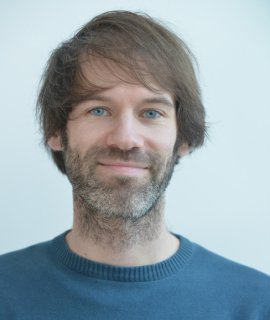
Dr. Marcel Stimberg
Sorbonne Université, INSERM, CNRS (Brian Simulator)
Marcel Stimberg is a research engineer at the Institut de la Vision (Sorbonne Université, INSERM, CNRS) in Paris. He studied computer science at the TU Berlin and the University of Sussex, receiving his Master's degree from the TU Berlin in 2005, followed by a PhD in computational neuroscience in 2011. His interests and activities are in models of neural computation, simulation technology, and improving the practices in research software development.
He has been leading the development of the Brian simulator since 2014, and is involved in a number of other open source research software projects and initiatives promoting good software development practices in research.
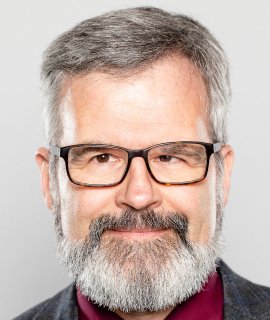
Prof. Dr. Hans Ekkehard Plesse
Norwegian University of Life Sciences (NEST Simulator)
Hans Ekkehard Plesser is a physicist by training (Dipl-Phys RWTH Aachen 1995, Dr rer nat U Göttingen 1999) with a focus on scientific computing throughout his career. He joined the Norwegian University of Life Sciences first as a Marie-Curie-Fellow in 2000 currently leads the Department of Data Science at NMBU as a professor in informatics. He has been a visiting researcher at NYU and OSU (2002), the RIKEN Brain Science Institute (2008-2011), and Research Centre Jülich (since 2013). Hans Ekkehard has been a core developer of the NEST Simulator for large-scale neuronal networks since 2001 and president of the NEST Initiative since 2014 and served as chairman of the board of the Norwegian Research School for Neuroscience from 2013 to 2020. He has been involved in the Human Brain Project from its beginning and currently leads the EBRAINS High-Level Support Team.

Prof. Thomas Nowotny
University of Sussex (GeNN)
Thomas Nowotny received a PhD in theoretical Physics from the University of Leipzig in 2001 and after post-doctoral training at the University of California, San Diego joined the University of Sussex in 2007 where he is now a Professor of Informatics, the director of the be.AI Leverhulme Doctoral Scholarship program in biomimetic embodied AI and the head of the AI research group. His research interests include computational Neuroscience, in particular olfaction in insects, bio-inspired and embodied AI, GPU accelerated simulation of spiking neural networks, neuromorphic computing and hybrid brain-computer systems.
Educational Webinar Day 7: "How can we design neuromorphic circuits that learn?"
May 11th, 2021
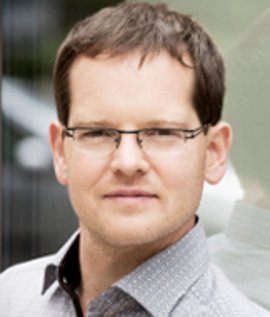
Prof. Christian Mayr
Technische Universität Dresden
His research interests include bio-inspired circuits, biologically-inspired Artificial Intelligence, Brain-Machine-Interfaces, AD converters, pixel sensors and general mixed-signal VLSI-design. His scientific credits include the world-first neuromorphic system-on-chip (SoC) in 28 nm CMOS, several novel mixed-signal ICs aimed at the interface between nerve cell tissue and electronics, as well as foundational work on the modelling and circuit implementation of synaptic plasticity (i.e. learning). He is author or co-author of over 70 publications and holds 3 patents. His work has received the Heinrich Barkhausen Price (2008) by the Carl Friedrich von Siemens Foundation and the Meyer Struckmann Science Price (2013) by the Meyer Struckmann Foundation.
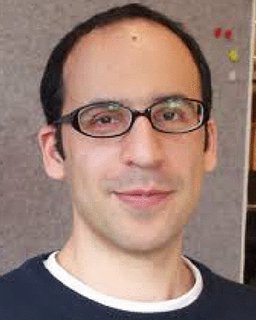
Dr. Mostafa Rahimi Azghadi
James Cook University, Townsville
Dr. Azghadi was the recipient of several national and international accolades including a 2015 South Australia Science Excellence award, a 2016 Endeavour Research Fellowship, a 2017 Queensland Young Tall Poppy Science Award, a 2018 JCU Rising Star ECR Leader Fellowship, a 2019 Fresh Science Queensland finalist, and a 2020 JCU Award for Excellence in Innovation and Change. He is a TC member of Neural Systems and Applications of the circuit and system society. He is an Associate Editor for Frontiers in Neuromorphic Engineering and IEEE Access.

Dr. Melika Payvand
University of Zurich and ETHZ
HOW CAN NOVEL TECHNOLOGIES BOOST NEUROMORPHIC COMPUTING? A VIEW FROM EUROPEAN PROJECT CONSORTIA.
April 27th, 2021
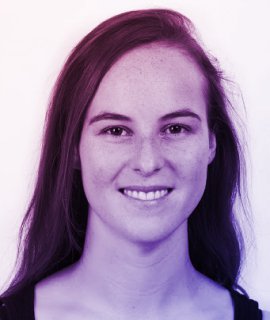
Dr. Alice Mizrahi
CNRS/Thales
Alice Mizrahi is a researcher at Thales, within the Unité Mixte de Physique CNRS/Thales. Her work interests include neuromorphic computing with nano-scale dynamical systems, and in particular spintronics devices. She completed her PhD at the Université Paris Saclay and a postdoc at the National Institute of Standards and Technology (USA) before joining Thales in 2018.
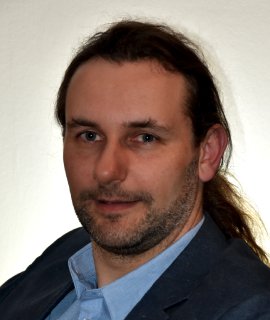
Dr. Stefan Slesazeck
NaMLab gGmbH, Germany
Stefan Slesazeck received the Ph.D. degree in microelectronics from the Technische Universität Dresden, Dresden, Germany, in 2004. As a Device Engineer he started his carrier at Infineon and later Qimonda Dresden with a focus on the pre-development of 3D DRAM access devices and concept evaluation for 1T-DRAM. In 2009, Stefan joined NaMLab gGmbH and holds a position as Senior Scientist. His research interests focus on development, electrical characterization, and modeling of non-volatile memory devices.
Dr.-Ing. Stefan Slesazeck
Senior Scientist
NaMLab gGmbH | a tu dresden company | Nöthnitzer Str. 64 a | 01187 Dresden
phone: +49 351 2124990 44 | fax: +49 351 2124990 99 | cell: +49 174 2108725
Stefan.Slesazeck@namlab.com | www.namlab.com
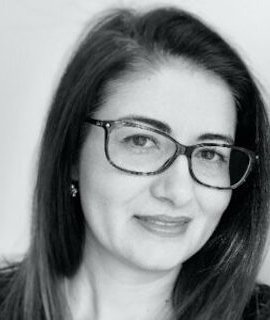
Dr. Aida Todri-Sanial
CNRS
Aida Todri-Sanial received the B.S. degree in electrical engineering from Bradley University, IL in 2001, M.S. degree in electrical engineering from Long Beach State University, CA, in 2003 and a Ph.D. degree in electrical and computer engineering from the University of California, Santa Barbara, in 2009. She is currently a Director of Research for the French National Council of Scientific Research (CNRS) attached to Laboratoire d’Informatique de Robotique et de Microélectronique de Montpellier (LIRMM). Dr. Todri-Sanial was a visiting fellow at the Cambridge Graphene Center and Wolfson College at the University of Cambridge, UK during 2016-2017. Previously, she was an R&D Engineer for Fermi National Accelerator Laboratory, IL. She has also held visiting research positions at Mentor Graphics, Cadence Design Systems, STMicroelectronics and IBM TJ Watson Research Center. Her research interests focus on emerging technologies and novel computing paradigms such as neuromorphic and quantum computing
Dr. Aida Todri-Sanial
Director of Research CNRS
LIRMM/University of Montpellier
161 rue Ada, CC 447
Montpellier 34095
France
Phone: +33 4 67 14 97 53
Email: todri@lirmm.fr
Web: www.lirmm.fr/~todri
Twitter: @AidaTodri

Prof. Cristell Maneux
UNIVERSITE DE BORDEAUX
Cristell MANEUX received the M.Sc. degree in electronics engineering and the Ph.D. degree in electronics from the University of Bordeaux, Bordeaux, France, in 1994 and 1998, respectively. From 1998 to 2012, she has been Associate Professor in IMS Laboratory, Department of Sciences and Engineering, University of Bordeaux, France. Since 2012, she is Professor in the same laboratory, where she is deputy director since 2016. Her research interests focus on Compact modelling of advanced and emerging devices: InP HBT, SiGe HBT, Carbon NanoTube Transistors, Graphene Transistors, Nanowire Transistors; Device electrical characterization: DC, RF, pulsed, Low Frequency noise, RTS Noise; Device failure mechanisms and integrated circuit reliability; THz integrated devices for Beyond 5G communications; Unconventional nanoelectronics.
She has co-authored more than 180 publications on high-impact journals and conferences. She serves as Technical Program Committee member and/or reviewer for DATE, EuMW, Euro-SOI, ISCAS, NEWCAS, and ESSDERC. Prof. Maneux is member of the Editorial Advisory Board of Solid State Electronics since 2020 and member of the steering committee of the IMS-ST Microelectronics common lab since 2006.
Prof. Dr. Cristell Maneux
IMS / University of Bordeaux
351, Cours de a libération
TALENCE 33405
France
Phone: +33 5 4000 2858
Email: cristell.maneux@u-bordeaux.fr
Web: https://www.ims-bordeaux.fr/fr/annuaire/5068-maneux-cristell
LinkedIn: https://www.linkedin.com/in/cristell-maneux-7294945b/
Researchgate: https://www.researchgate.net/profile/C-Maneux
Educational Webinar Day 6: "Which algorithms can support neuromorphic learning?"
April 13th, 2021
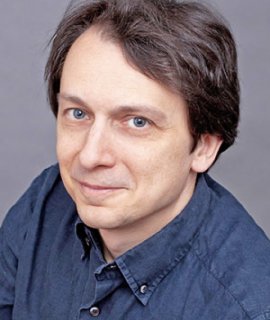
Prof. Stefano Fusi
Columbia University
Stefano Fusi was born in Florence, Italy, and graduated in 1992 from the Sapienza University of Rome with a degree in physics. After his degree, he obtained a researcher position at the Italian National Institute for Nuclear Physics in Rome and started to work in the field of theoretical neuroscience. In 1999, he received a Ph.D. in physics from the Hebrew University of Jerusalem, Israel, and moved to the University of Bern, Switzerland, as a postdoctoral fellow. After visiting Brandeis University as a postdoctoral fellow in 2003, in 2005 he was awarded a professorial fellowship by the Swiss National Science Foundation and became assistant professor at the Swiss Federal Institute of Technology in Zurich (ETHZ), Switzerland. In 2009, he joined the Department of Neuroscience at Columbia University as an associate professor. He is an associate editor of Frontiers in Computational Neuroscience. Professor Fusi’s research involves the computational modeling and theoretical analysis of complex neural circuits with the goal of understanding the role of biological complexity and diversity in the nervous system. His laboratory collaborates with experimental neuroscientists at Columbia University, the Massachusetts Institute of Technology, and Stanford University.
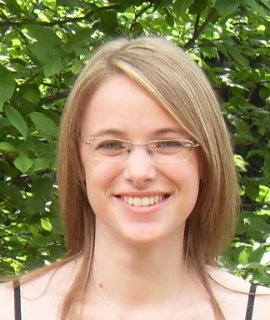
Laura Kriener
Phd Candidate, University of Bern
Laura Kriener received her M.Sc. degree in physics from the Heidelberg University in Germany. Her Master's thesis in the Electronic Visions Group at the Kirchhoff Institute was focused on the application of circuit simulations during the development process of neuromorphic hardware. Currently, she is working on her PhD in the neuro-inspired theory, modeling and applications group at the University of Bern. Her research is centered around learning algorithms inspired by both neuroscience and machine learning, as well as their deployment on neuromorphic platforms.
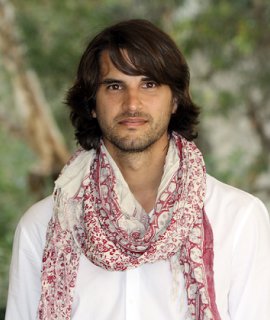
Prof. Emra Neftci
UC Irvine
Dr. Emre Neftci received his M.Sc. degree in physics from Ecole Polytechnique Federale de Lausanne, Switzerland, and his Ph.D. in 2010 at the Institute of Neuroinformatics at the University of Zurich and ETH Zurich. Currently, he is an assistant professor in the Department of Cognitive Sciences and Computer Science at the University of California, Irvine. His current research explores the bridges between neuroscience and machine learning, with a focus on the theoretical and computational modeling of learning algorithms that are best suited to neuromorphic hardware and non-von Neumann computing architectures. Emre’s lab strives to create computing systems that work more like the brain, by combining the fundamental and the applied. Specifically, the long-term research goal is to emulate high-level, cognitive function in dedicated neuromorphic hardware systems. The approach is to study neural circuits as computational substrates implementing a class of machine learning algorithms and to design brain-inspired (neuromorphic) architectures that efficiently implement these algorithms.
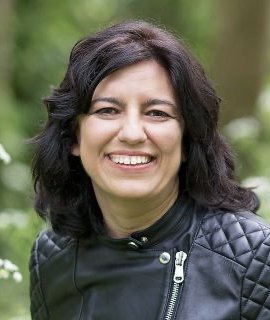
Prof. Cristell Maneux
UNIVERSITE DE BORDEAUX
Eleni graduated with a Bachelor’s degree in Informatics and Telecommunications and a Master’s degree in Microelectronics from the University of Athens, before taking her DPhil (PhD) at Sussex, in Computer Science and Artificial Intelligence. From 2004 to 2006 she worked at the University of Bern and from 2007 to 2009 at the Swiss Federal Institute of Technology Lausanne (EPFL). In 2009 she joined the University of Sheffield as Lecturer, where she is Professor since 2016. Currently, Eleni is the Chair of Computational Neuroscience & Neural Engineering and the Head of the Machine Learning research group. Eleni’s research interests include Computational Neuroscience and Artificial Intelligence, in particular, Synaptic plasticity and Learning. Eleni develops computational models aiming to advance our understanding of brain learning mechanisms. She targets to unveil the principles that govern the modifications of the neuronal connections when acquiring information, with emphasis to unsupervised and reinforcement learning.
Educational Webinar Day 5: "How to process information from event-driven sensors?"
March 9th, 2021
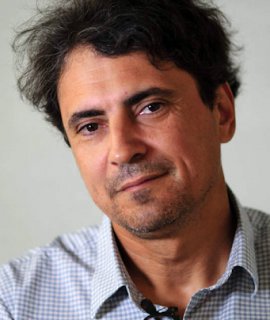
Prof. Ryad Benosman
University of Pittsburgh / Carnagie Mellon / Sorbonne
Prof. Ryad B. Benosman is a full Professor at both the University of Pittsburgh, Carnegie Mellon University and Sorbonne Universitas where he does research at the intersection of AI, computer vision and neuroscience. Specifically, he investigates the use of standard and neuromorphic cameras to enable new bioinspired AI, autonomous, agile robotics, brain-machine interfaces focusing on retina prosthetics, optogenetics stimulation and recently visual cortex stimulation. Ryad did his PhD in robotics and computer vision at University of Pierre and Marie Curie after studying mathematics. He is a pioneer in the field of event based neuromorphic computation. His lab developed the ATIS neuromorphic camera. He has authored more than 200 papers, which provide the foundations of neuromorphic computer vision. He also founded several companies such as Prophesse (formerly Chronocam), Pixium Vision (retina prosthetics), Chronolife (eHealth) and more recently Brainiac (neural processor computer).
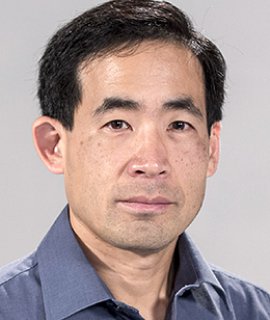
Prof. Bertram Shi
Hong Kong University of Science and Technology
Bertram E. Shi is a Professor and the Head of the Department of Electronic and Computer Engineering at the Hong Kong University of Science and Technology, which he joined in 1994. He received the B.S./M.S. Degrees in Electrical Engineering at Stanford University in 1987/1988, and the Ph.D. degree in Electrical Engineering at the University of California at Berkeley in 1994. He was a visiting faculty at the Department of Bioengineering at the University of Pennsylvania in 2002 and the Department of Electrical Engineering and Computer Science at the Massachusetts Institute of Technology in 2009. His research interests lie in the areas of neuromorphic engineering, robotics, human machine interfaces, and computational neuroscience. He was named IEEE Fellow in "for contributions to the analysis, implementation and application of cellular neural networks" in 2001. He was a Distinguished Lecturer for the IEEE Circuits and Systems Society for 2001-2002 and 2007-2008. His research group won the 2017 Facial Expression Recognition and Analysis (FERA) AU Intensity Estimation Challenge, and have received top paper prizes at international conferences. He is or has been an Associate Editor for IEEE Transactions on Circuits and Systems I and II, the IEEE Transactions on Biomedical Circuits and Systems and Frontiers in Neuromorphic Engineering. He is a past-Chair of the IEEE Circuits and Systems Society Technical Committee on Cellular Neural Networks and Array Computing and Technical/General Program Chair of the 2004/2005 IEEE International Workshop on Cellular Neural Networks and their Applications.
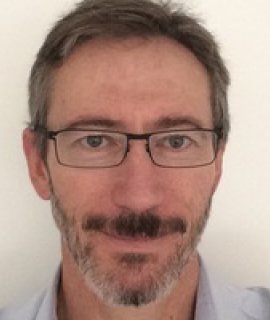
Industry Workgroup Webinar: "How can one make money with Neuromorphic Technologies?"
February 22nd, 2021
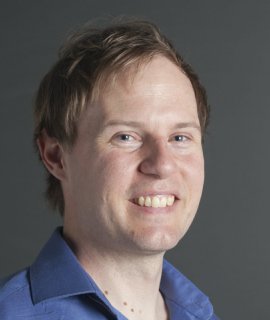
Dr. Dylan Muir, PhD
SynSense
Director, Algorithm and Applications
Director, Global Business Development
Dylan Muir is a specialist in architectures for neuromorphic computation. He has published extensively in computational and experimental neuroscience. At SynSense he is responsible for directing development of neural architectures for signal processing, as well as business development. Dr. Muir holds a Doctor of Science (PhD) from ETH Zürich, and undergraduate degrees (Masters) in Electronic Engineering and in Computer Science from QUT, Australia.
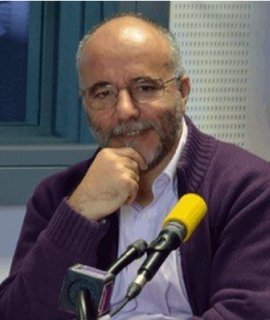
Pierre Bessière
HawAI
Conseiller scientifique/Business Angel
Pierre Bessière (born in 1958) received the engineering degree (1981) and the PhD degree (1983) in computer science from the Institut National Polytechnique de Grenoble (INPG). He did a Post-Doctorate at SRI International (Stanford Research Institute) working on a project for NASA. He then worked for five years in an industrial company as the leader of different artificial intelligence projects. He came back to research in 1989. He has been a senior researcher at CNRS since 1992. His main research concerns have been evolutionary algorithms and probabilistic reasoning. He leads the Bayesian Programming research group on these two subjects. He is a co-founder and scientific adviser of the ProbaYes Company, created in 2003, which develops and sells Bayesian solutions for the industry. ProbaYes joined the La Poste group in 2016. He is a co-founder and scientific adviser of HawAI.tech created in 2019.
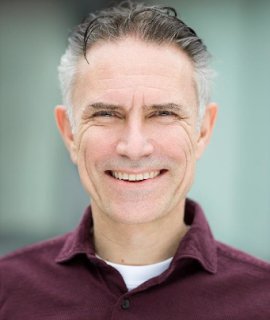
Menno Lindwer
GrAI Matter Labs
VP IP&Silicon, GrAI Matter Labs
Managing Director, GrAI Matter Labs
Menno Lindwer is leading GML’s hardware development department, which includes developing neuromorphic and neural network processors. Prior to joining GML, Menno was Processor Technology Architect, Engineering Manager, and Program Manager at Intel.
He received his M.sc from Twente University and his PDEng from Eindhoven University in 1993. Since then, he studied asynchronous devices, database matching technology, 3D graphics renderers, media processor design, and AI processors. In 1995, he joined Philips Research, working on the design of Java and Media processors. In 2002, he was part of the team that started up Silicon Hive. He was director of product management for Silicon Hive’s HiveLogic parallel processing platform. Silicon Hive was acquired by Intel in February 2011. At Intel, Menno led teams that worked on processor construction tools and optimizing auto-targeting compilers. Also, Menno led Intel's activities in several EU projects.
Menno’s work has led to over 30 scientific articles and patent publications (seven patents currently assigned in the US). His interests include low-power computing systems, neuromorphic and neural network processors, and spatial compilers. Menno served on the executive committee and technical program committees of the DATE conference. He co-authored several articles on Ambient Intelligence at DATE, on media processing at IEEE ISM, GSPX, on compiler technology in IJPP, and on design space exploration for multi-ASIP systems.
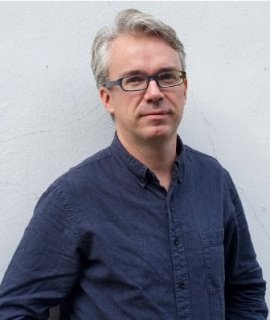
Laurent Daudet
LightON
CTO & Co-Founder
Educational Webinar Day 4: "What is an event-driven sensor?"
February 9th, 2021

Prof. Tobi Delbruck
Tobi Delbruck received a Ph.D. degree from Caltech in 1993 in the inaugural class of the Computation and Neural Systems program founded by John Hopfield, as a student of Christof Koch, David van Essen and Carver Mead. Currently he is a Professor of Physics and Electrical Engineering at ETH Zurich in the Institute of Neuroinformatics, University of Zurich and ETH Zurich, Switzerland, where he has been since 1998. He co-organized the Telluride Neuromorphic Cognition Engineering workshop and the live demonstration sessions at ISCAS and NIPS. Delbruck is past Chair of the IEEE CAS Sensory Systems Technical Committee. He worked on electronic imaging at Arithmos, Synaptics, National Semiconductor, and Foveon and has founded 3 spin-off companies, including www.inilabs.com , which supports basic R&D on neuromorphic sensory processing. He has been awarded 9 IEEE awards and was named a Fellow of the IEEE Circuits and Systems Society for his work on neuromorphic sensors and processing. Besides playing with neuromorphic sensors, he likes to read, play tennis and basketball, and practice card magic on unwary subjects.
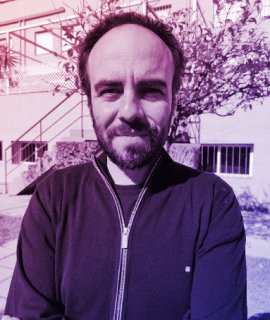
Prof. Angel Jiménez Fernández
Angel Jiménez-Fernández received the B.S. degree in computer engineering, the M.S. degree in industrial computer science, and the Ph.D. degree in neuromorphic engineering from the University of Seville, Seville, Spain, in 2005, 2007, and 2010, respectively. He has been an Assistant Professor of Computer Architecture and Technology with the University of Seville since 2007, where he was promoted to Associate Professor in 2011. He founded a spin-off company, COBER, focused on biomedical robotics and neuromorphic hardware development, and is currently coordinator of the degree in Biomedical Engineering at the University of Seville. His current research interests include neuromorphic engineering applied to robotics, real-time spikes signal processing, neuromorphic sensors, field programmable gate array digital design, and embedded systems development.
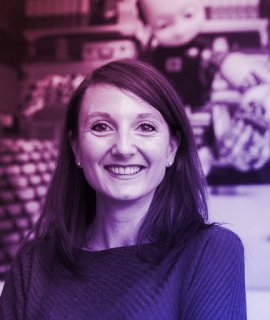
Dr. Chiara Bartolozzi
Chiara Bartolozzi is Researcher at the Italian Institute of Technology. She earned a degree in Engineering at University of Genova (Italy) and a Ph.D. in Neuroinformatics at ETH Zurich, developing analog subthreshold circuits for emulating biophysical neuronal properties onto silicon and modelling selective attention on hierarchical multi-chip systems. She is currently leading the Neuromorphic Systems and Interfaces group, with the aim of applying the "neuromorphic" engineering approach to the design of robotic platforms as enabling technology towards the design of autonomous machines. This goal is pursued by inducing a paradigm shift in robotics, based on the emerging concept of Event-Driven (ED) sensing and processing. Similarly to their biological counterpart, and differently from traditional robotic sensors, ED sensory systems sample their input signal at fixed (and relative) amplitude changes, intrinsically adapting to the dynamics of the sensory signal: temporal resolution is extremely high for fast transitory signals and decreases for slower inputs. This approach naturally leads to better robots that acquire, transmit and process information only when needed, optimising the use of resources, leading to real-time, low-cost, operation.
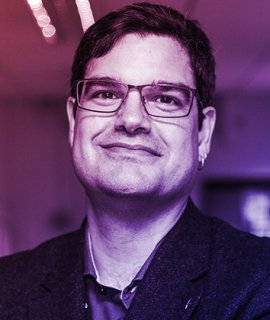
Prof. Michael Schmuker
Michael is a computer scientist dedicated to translating algorithms and processes from biology and the brain into solutions for data science and machine learning. He has a degree in Biology, a PhD in Chemical Informatics, as well as postdoctoral experience in developing and applying data science methods in Neuroscience, Chemistry, and Computer Science, solving problems in a wide area of fields ranging from drug discovery and brain imaging to gas sensing in turbulent environments. Michael is a pioneer in neuromorphic computing, an emerging technology that takes inspiration from the brain to achieve low-power and low-latency AI. He is now leading a team of researchers to develop event-based algorithms for neuromorphic olfaction, low-latency detection and identification of chemical signals. Before joining the University of Hertfordshire in 2016, Michael held a Marie Curie Fellowship at the University of Sussex. He received funding from the EU, the German DFG and BMBF, Volkswagen Foundation and EPSRC. Michael leads the work package “Neuromorphic Applications and Benchmarks” within the European research flagship "Human Brain Project” and is a founding member of the NEUROTECH consortium to coordinate and support the advancement of neuromorphic technology in Europe.
Educational Webinar Day 3: "Which technology can support in-memory computing?"
January 12th, 2021
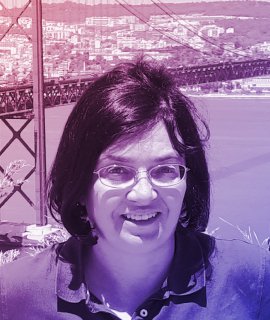
Dr. Sabina Spiga
Sabina Spiga is Senior Researcher at CNR (National Research Council) - IMM (Institute for Microelectronic and Microsystems) – Unit of Agrate Brianza, Italy. She received the Degree in Physics from the Università di Bologna in 1995 and the PhD in Material Science in 2002 from Università di Milano. She is currently in charge of developing oxide-based resistive switching non-volatile memories and memristive devices for brain-inspired computation systems. Her research activity has been/is carried out in the framework of European, industrial and Italian R&D projects. She is currently principal investigator for CNR PI of the Horizon-2020 projects NEUROTECH -“Neuromorphic Computing Technologies” and MeM-Scales “Memory technologies with multi-scale time constants for neuromorphic architectures”. In the past she has been PI of the EU project- NeuRAM3- “NEUral computing aRchitectures in Advanced Monolithic 3D-VLSI nano-technologies”, and and member of the Management Committee for Italy of the COST Action ICT 1401-“Memristors-Devices, Models, Circuits, Systems and Applications”. S. Spiga is co-author of more than 120 publications on peer reviewed journals and proceedings. She co-organized several symposia and/or she has been member of the scientific committee of international Conferences. She is currently member of the IEDM Memory Technology subcommittee (2019-2020), IRPS 2020 and 2021 (Neuromorphic committee) and of editorial board of the J. Phys D: Applied Physics.
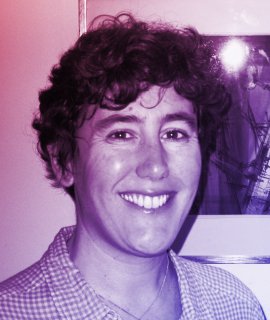
Dr. Julie Grollier
Julie Grollier is a research director in the CNRS/Thales lab in France. Her Ph.D. was dedicated to the study of a new effect in spintronics: the spin transfer torque. After two years of post-doc, first in Groningen University (Netherlands, group of B.J. van Wees), then in Institut d’Electronique Fondamentale (France, group of C. Chappert), she joined CNRS in 2005. Her current research interests include spintronics (dynamics of nanomagnets under the spin torque effect), and new devices for cognitive computation (in particular memristors). Julie has over 100 publications, and is a frequent invited speaker in international conferences. She is also a Fellow of the American Physical Society. In 2010 she was awarded the Jacques Herbrand prize of the French Academy of Science, and in 2018 the Silver Medal of CNRS for her pioneering work on spintronics and brain-inspired computing. She is the recipient of two prestigious European Research Council grants: "NanoBrain" project (Memristive Artificial Synapses and their integration in Neural Networks, 2010-2015) and "BioSPINSpired" project (Bio-inspired Spin-Torque Computing Architectures, 2016-2021). Julie is now leading the “nanodevices for bio-inspired computing” team that she initiated in 2009. She is also chair of the interdisciplinary research network GDR BioComp, coordinating national efforts for producing hardware bio-inspired systems.
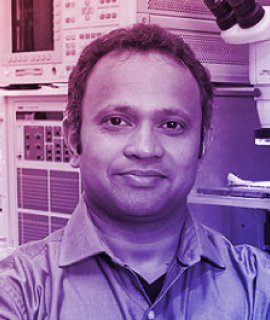
Dr. Abu Sebastian
Abu Sebastian was born in Kerala, India. He received a B. E. (Hons.) degree in Electrical and Electronics Engineering from BITS Pilani, India and M.S. and Ph.D. degrees in Electrical Engineering (minor in Mathematics) from Iowa State University. Since 2006, he is a Research Staff Member at IBM Research - Zurich in Rüschlikon, Switzerland. He was a contributor to several key projects in the space of storage and memory technologies and currently manages the research effort on in-memory computing at IBM Research - Zurich. He has published over 180 articles in journals and conference proceedings. He also holds over 50 granted patents. Dr. Sebastian is a co-recipient of the 2009 IEEE Control Systems Technology Award and the 2009 IEEE Transactions on Control Systems Technology Outstanding Paper Award. In 2013 he received the IFAC Mechatronic Systems Young Researcher Award for his contributions to the field of micro-/nanoscale mechatronic systems. In 2015 he was awarded the European Research Council (ERC) consolidator grant. He has been an IBM Master Inventor since 2016. He was named Principal and Distinguished Research Staff Member in 2018 and 2020, respectively. In 2019 he received the Ovshinsky Lectureship Award for his contributions to "Phase-change materials for cognitive computing".
Educational Webinar Day 2: "What are hardware opportunities for neuromorphic engineering?"
December 1st, 2020
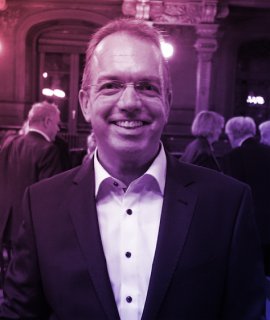
Prof. Johannes Schemmel
Johannes Schemmel received the Ph.D. degree in physics from Heidelberg University, Heidelberg, Germany, in 1999. He is currently an “Akademischer Oberrat” with the Kirchhoff Institute of Physics, Heidelberg, Germany, where he is the Head of the ASIC Laboratory and the Electronic Vision(s) group. He is an Architect of the Spikey and BrainScaleS accelerated Neuromorphic hardware systems. His research interests include mixed-mode VLSI systems for information processing, especially the analog implementation of biologically realistic neural network models.
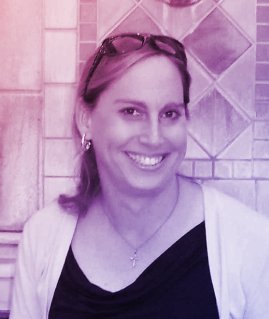
Prof. Jennifer Olson Hasler
Dr. Jennifer Hasler received her B.S.E. and M.S. degrees in electrical engineering from Arizona State University in August 1991. She received her Ph.D. in computation and neural systems from California Institute of Technology in February 1997, and she received her Master of Divinity degree from the Candler School of Theology at Emory University in 2020. Dr. Hasler is a professor at the Georgia Institute of Technology in the School of Electrical and Computer Engineering; Atlanta is the coldest climate in which Dr. Hasler has lived.Dr. Hasler founded the Integrated Computational Electronics (ICE) laboratory at Georgia Tech, a laboratory affiliated with the Laboratories for Neural Engineering. Dr. Hasler is a member of Tau Beta P, Eta Kappa Nu, and the IEEE.
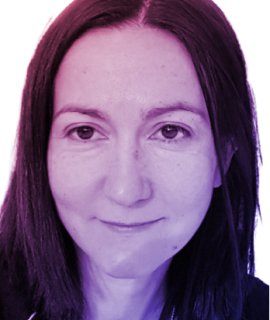
Dr. Elisa Vianello
Elisa Vianello is a senior scientist at CEA-Leti. She joined the institute in 2011 after spending one year on the research staff at Fondazione Bruno Kessler, Trento. Her current research interests concern the development of new technologies for bio-inspired neuromorphic computing, with special focus on resistive switching memory devices (RRAM) and phase change memory (PCM). She has authored or co-authored 4 book chapters and more than 100 technical papers. She is coordinator of the "MeM-Scales" (2020-2022) European project (H2020) focused on the codevelopment of a novel class of algorithms, devices and circuits that reproduce multi-timescale processing of biological neural systems. She also is associate editor of the APL special issue on Emerging Materials in Neuromorphic Computing (February 2020) and of the incoming IEEE Transactions on Circuits and Systems –II (2020-2021). She received the PhD in Electrical Engineering from the Università degli Studi di Udine (Italy) and the Grenoble Institute of Technology (INPG, France) in 2010.
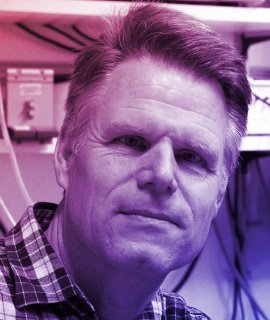
Dr. Bert Jan Offrein
Bert Jan Offrein received his Applied Physics and Ph.D. degrees from the University of Twente. Dr. Bert Jan Offrein joined IBM in 1995 and worked on optical components for WDM networks. From 2004 to 2016, he was the manager of the photonics group at IBM where he was leading several international and global collaborative R&D projects on electro-optical interconnect technology. Since 2016 he is managing the neuromorphic devices and systems group, focusing on novel hardware for cognitive systems. He is a (co-) author of over 100 publications and more than 40 patents and patent applications.
Educational Webinar Day 1: “What is neuromorphic engineering?”
November 3rd, 2020.

Prof. Giacomo Indiveri
Giacomo Indiveri received the M.Sc. degree in electrical engineering and the Ph.D. degree in computer science and electrical engineering from the University of Genova, Genova, Italy, in 1992 and 2004, respectively.
Currently, he is a dual Professor at the Faculty of Science of the University of Zurich and at the Department of Information Technology and Electrical Engineering of ETH Zurich, Switzerland. He is the director of the Institute of Neuroinformatics (INI) of the University of Zurich and ETH Zurich. He was a post-doctoral research fellow in the Division of Biology at Caltech and at the Institute of Neuroinformatics of the University of Zurich and ETH Zurich. He was awarded an ERC Starting Grant on "Neuromorphic processors" in 2011 and an ERC Consolidator Grant on neuromorphic cognitive agents in 2016.
His research interests lie in the study of real and electronic neural processing systems, with a particular focus on spike-based learning and spike-based recurrent neural network dynamics. His research and development activities focus on the full custom hardware implementation of real-time sensory-motor systems using analog/digital neuromorphic circuits and emerging memory technologies.
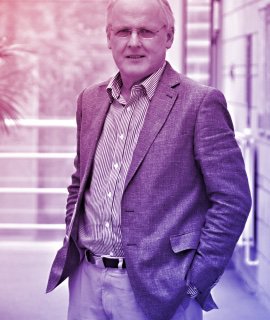
Prof. Steve Furber
Steve Furber received a B.A. in mathematics in 1974 and a Ph.D. in aerodynamics in 1980, both from the University of Cambridge. He is ICL Professor of Computer Engineering in the School of Computer Science at the University of Manchester. From 1980 to 1990, he worked in the hardware development group at Acorn Computers Ltd and was a principal designer of the BBC Microcomputer (1982) and the ARM 32-bit RISC microprocessor.
Designed with colleague Sophie Wilson as part of a national TV program on personal computing, well over a million BBC Micros were sold and used in more than 80 percent of all U.K. schools. Furber and Wilson then co-designed the 32-bit Acorn RISC Machine (ARM) processor (1985) to address a need at Acorn for a new microprocessor that outperformed any then commercially available. The ARM processor core is now used in thousands of different products, from mobile phones and tablets to digital televisions and video games. It has enabled the mobile revolution in computing with its efficient power-sipping microprocessors. The number of ARM processor cores now shipped exceeds 180 billion, or more than four ARM microprocessors for every person on earth.
Furber's current research interests include the SpiNNaker project, which seeks to emulate a small portion of the human brain using one million ARM processor cores.
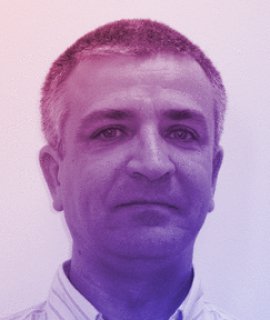
Prof. Bernabe’ Linares-Barranco
Bernabé Linares-Barranco received the B. S. degree in electronic physics in June 1986 and the M. S. degree in microelectronics in September 1987, both from the University of Seville , Sevilla , Spain . From September 1988 until August 1991 he was a Graduate Student at the Dept. of Electrical Engineering of Texas A&M University. He received a first Ph.D. degree in high-frequency OTA-C oscillator design in June 1990 from the University of Seville, Spain, and a second Ph.D deegree in analog neural network design in December 1991 from Texas A&M University, College-Station, USA.
Since June 1991, he has been a Tenured Scientist at the "Instituto de Microelectrónica de Sevilla" , (IMSE-CNM-CSIC) Sevilla, Spain, which since 2015 is a Mixed Center between the University of Sevilla and the Spanish Research Council (CSIC). From September 1996 to August 1997, he was on sabbatical stay at the Department of Electrical and Computer Engineering of the Johns Hopkins University. In January 2003 he was promoted to Tenured Researcher, and in January 2004 to Full Professor. Since February 2018, he is the Director of the "Insitituto de Microelectrónica de Sevilla".
He has been involved with circuit design for telecommunication circuits, VLSI emulators of biological neurons, VLSI neural based pattern recognition systems, hearing aids, precision circuit design for instrumentation equipment, VLSI transistor mismatch parameters characterization, and over the past 20 years has been deeply involved with neuromorphic spiking circuits and systems, with strong emphasis on vision and exploiting nanoscale memristive devices for learning. He is co-founder of two start-ups, Prophesee SA (www.prophesee.ai) and GrAI-Matter-Labs SAS (www.graimatterlabs.ai), both on neuromorphic hardware.
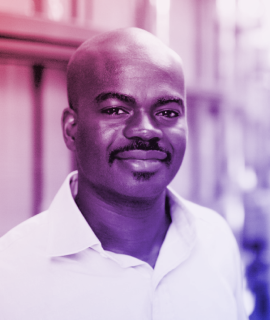
Prof. Kwabena Boahen
Kwabena Boahen received his B.S. and M.S. in electrical engineering in 1989 from Johns Hopkins University and his PhD in computation and neural systems in 1997 from the California Institute of Technology, where he was advised by Carver Mead. For his PhD thesis, Boahen designed and fabricated a silicon chip emulating the functioning of the retina. After completing his PhD, Boahen joined the faculty of University of Pennsylvania where he held the Skirkanich Term Junior Chair.
In 2005 he moved to Stanford University and is currently the director of the Brains in Silicon Lab. He is widely regarded as one of the pioneers of neuromorphic engineering. He was named an IEEE fellow in 2016.
Specific contributions throughout his career include the development of the current-mode subthreshold CMOS circuit design paradigm, the address-event approach to communicating spikes between neuromorphic chips, and the scalable design of multi-chip systems. Boahen’s chips are mixed-mode: they employ analog circuits for computation and digital circuits for communication. Boahen's work has demonstrated that neuromorphic computer chips are capable of reproducing many types of brain phenomena across a large range of scales (e.g ion-channel dynamics, excitable membrane behavior,, the orientation tuning of neurons in Visual Cortex,, and neural synchrony). Utilizing these breakthroughs, Boahen's Stanford lab built the first neurmorphic system with one million spiking neurons (and billions of synapses), Neurogrid.